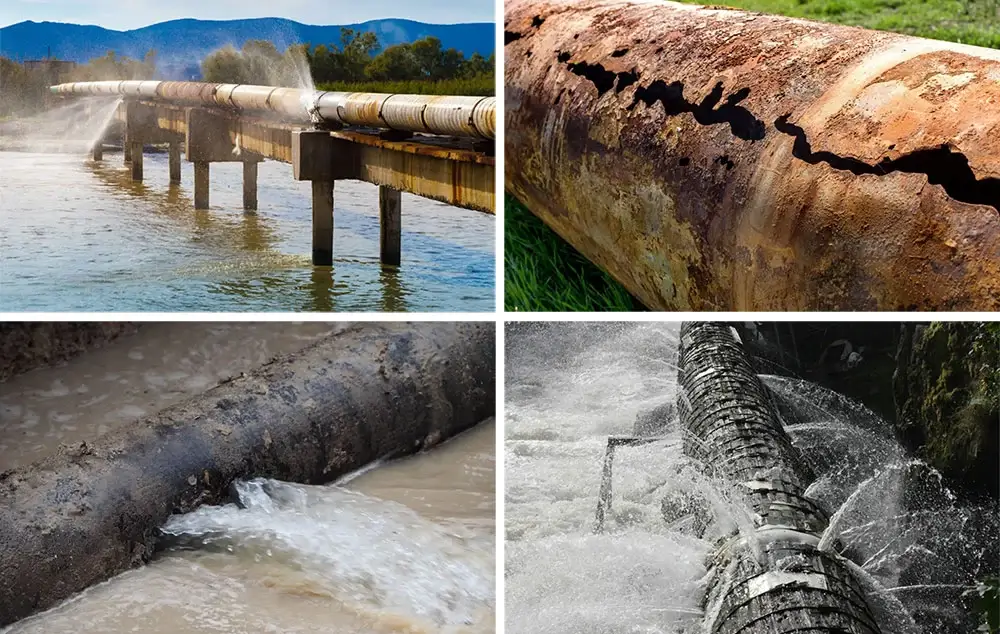Industry
An Overview of the Industry
Pipelines are the most cost-efficient and safest mode for transporting fluids, gasses, and chemically stable substances. There are millions of miles of transmission, distribution, and gathering lines around the world. Pipelines transport water, wastewater, crude oil and refined petroleum, natural gas and biofuels, slurry, beer, hot water, and steam.
Pipelines are used for transporting water for drinking and irrigation over long distances and specifically in areas where it needs to move over hills, or where canals or channels are poor choices due to considerations of evaporation, pollution, or environmental impact.
For decades, steel, lead, and cast iron had been the primary materials for water pipelines but health concerns with lead poisoning and corrosion have been a significant and costly issue.
Corrosion – The Ugly Truth
Globally, billions of gallons of water are lost daily from deteriorated pipes. In the United States alone, an estimated SIX BILLION gallons of water are lost EACH DAY because of leaking pipelines.
The corrosion of steel piping and its related components is continuous and has proven to be an unstoppable process. According to a study by National Association of Corrosion Engineers International, the total annual cost of corrosion in 2016, including direct and indirect costs, was estimated at over USD $1.1 trillion in the United States and $2.5 trillion globally.
It is time for change. We can no longer continue to spend hundreds of billions of dollars building critical pipelines that are made from inferior materials that lead to catastrophic failures and then billions or trillions more to repair the mistakes. Repairs are not a long-term solution, we need new pipelines that will not corrode or deteriorate. We need pipelines that provide a sustainable solution and preserve our water resources for future generations.
The Water Infrastructure Market
Even though our pipe will address significant issues in other markets and industries, our initial focus will be the water infrastructure market. Almost every country in the world faces the same crisis, a lack of safe drinking water for human, plant, and animal consumption.
The root cause is two-fold: we have depleted the vast majority of our natural safe drinking water from reservoirs and fresh-water lakes and rivers, and we have an aged and deteriorated pipeline infrastructure in critical need of repair or replacement.
An Emerging Solution
Several countries have begun to address their water crisis by building desalination plants. With each new plant, new pipelines must be built to transport the freshwater to the communities and agricultural developments.
Desalination plants cost hundreds of millions or billions of dollars to build and require a long-term vision for water supply. Traditional pipeline options like steel or PCCP have made the long-term outlook challenging because of the very high maintenance cost to repair and replace these materials frequently.
Our technology will make desalination plants significantly more economical and viable because the costs to maintain the transmission and distribution pipelines will decrease dramatically. The opportunity for countries to provide fresh drinking water to multiple communities is suddenly an economic possibility.





